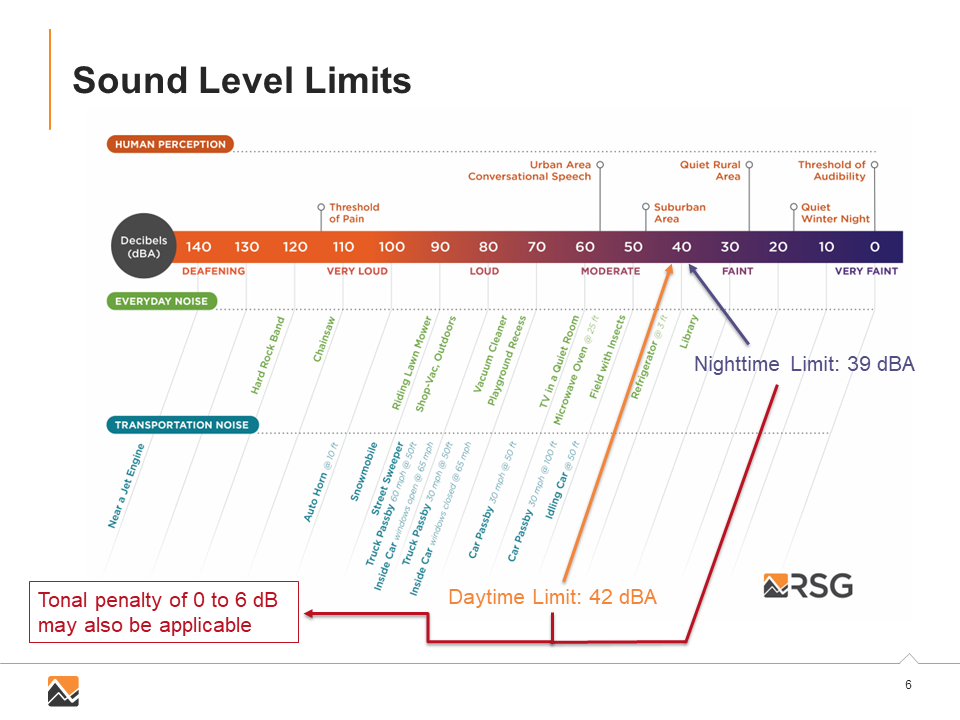The session Bringing Wind Back to Vermont was one of the most popular at REV2022 and it’s no mystery why: despite the state’s wind potential and the complementary nature of wind and solar power, wind development in Vermont has been stalled for more than half a decade. Moderated by Vero Bourg-Meyer (Clean Energy States Alliance) and featuring Eddie Duncan (RSG), Nick Laskovski (Greenbacker), and Ryan Darlow (Norwich Solar), this session dug into why we haven’t been building wind in Vermont and the climate and economic benefits that Vermonters have forgone as a result. The big takeaways? There are plenty of opportunities to build successful wind projects here in Vermont to increase our use of renewable energy. But first, our wind sound rule needs a major overhaul. This slide from RSG’s Eddie Duncan really puts the issue in sharp relief:
 Source: Eddie Duncan RSG
Source: Eddie Duncan RSG
Vermont’s nighttime sound limit of 39 decibels – measured 100 feet from the outside of a home – is lower than the noise from a refrigerator and about on par with the sound levels you might experience in a library. It’s far quieter than the traffic noise that many Vermonters experience near their homes. If it seems like Vermont’s sound standard might be out of step with common sense, it is. Our sound standard is far stricter than those of other northeast states. Maine allows 42 decibels of wind sound overnight, and New York allows 45 decibels. That may not seem like a big difference but decibels are measured on a logarithmic scale. This means that Maine’s 42-decibel limit equates to double the sound energy that Vermont allows and New York doubles that limit again. What’s the scientific rationale for setting a sound standard half that of Maine’s and a quarter that of New York’s? There isn’t one.
The current standard poses a major challenge to our energy and climate goals. While solar capacity in Vermont has expanded each year, wind capacity has stagnated. This hurts Vermonters because the least expensive way to meet our energy needs is by diversifying the sources of renewable energy that we use. Solar output is highest in the middle of the day in the spring and summer months. Wind output is highest overnight and in the winter months. Building both wind and solar means that we can spend less on transmission upgrades and batteries for energy storage than if we continue to build solar alone. As with solar, the cost of wind declined rapidly over the last decade. The Inflation Reduction Act provides a unique opportunity to accelerate the clean energy transition in Vermont with both wind and solar but only if we fix Vermont’s out-step wind sound standards. Otherwise, while we ask Vermonters to electrify their homes, business, and vehicles, wind power will continue to languish and the cost of the transition will be higher than it needs to be.
